The internet has taken over.
Check this out: People under the age of 34 spend about four hours online each day—on mobile devices alone.
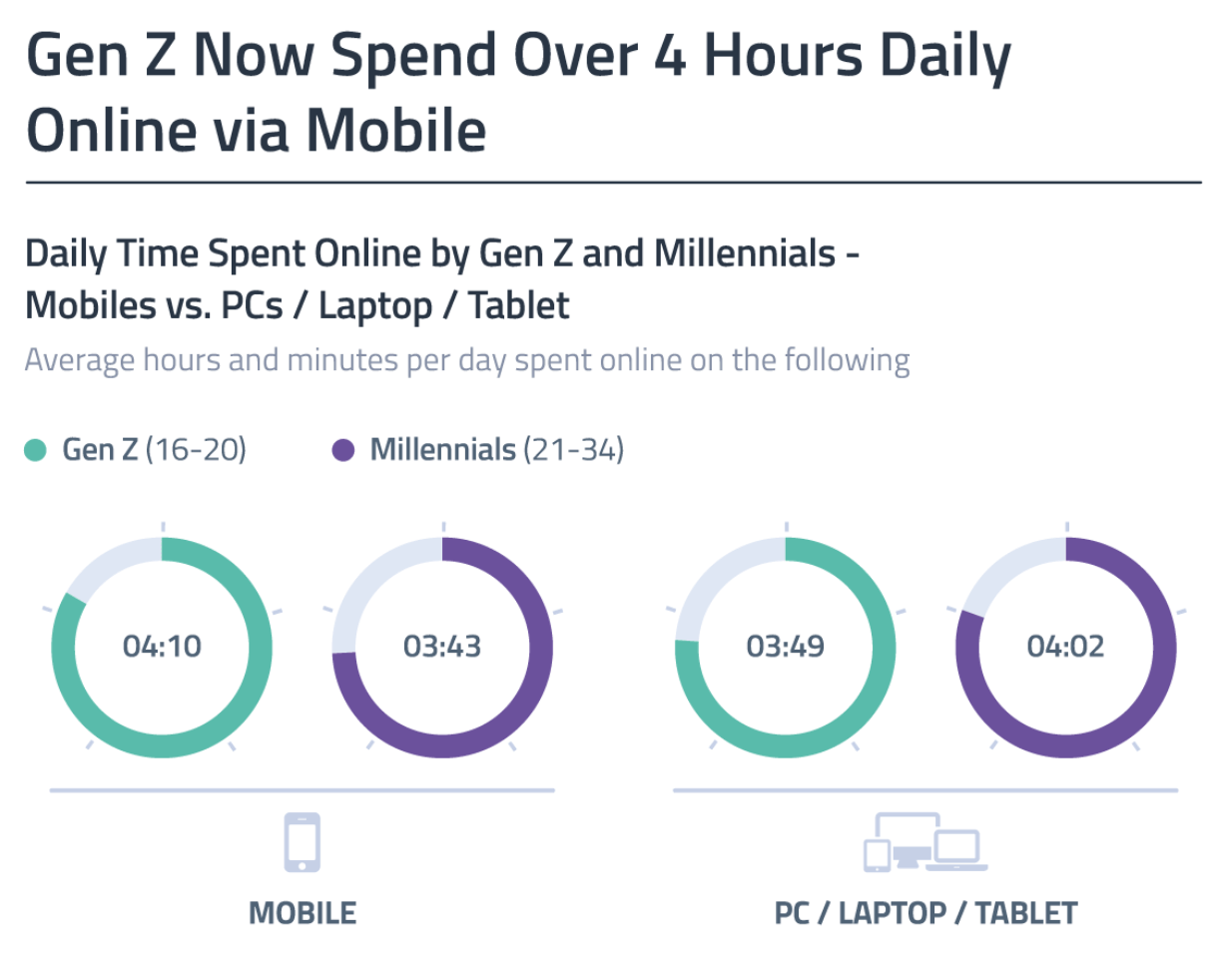
Today, the internet is used for pretty much everything—communication, learning, entertainment, shopping, and more.
Plus, there are currently 4.33 billion internet users worldwide—and this number is increasing every second.
For marketers, this presents an unbelievable opportunity. Never before could a single person reach so many other people, in so many ways, instantaneously, with such ease.
Excited?
In this article, you’ll learn all about the seven types of internet marketing so you can start using them to achieve business success.
Fasten your seatbelt.



What is internet marketing?
Internet marketing (also known as online marketing, e-marketing, or web marketing,) is an all-inclusive term used to describe marketing activities conducted online. For this reason, internet marketing encompasses a wide range of strategies and tactics, such as social media marketing, content marketing, pay-per-click, and search engine optimization.
What is the difference between internet marketing and digital marketing?
Although marketers often use these terms interchangeably, there are subtle differences between internet marketing and digital marketing. Essentially, digital marketing is a broad term for marketing strategies that leverage digital channels to promote products or services, from TV ads and billboards to social media platforms and pay-per-click campaigns. This indicates that digital marketing isn’t limited to the internet.
In contrast, internet marketing refers to a set of marketing strategies that are exclusively carried out via the internet. This makes it a subset of digital marketing, but it’s really a core factor, since most digital marketing strategies fall within the boundaries of internet marketing.
The 7 types of internet marketing strategies
There are seven main types of internet marketing:
- Social media marketing
- Search engine optimization (SEO)
- Content marketing
- Influencer marketing
- Affiliate marketing
- Email marketing
- Paid advertising
Each of these seven types of internet marketing encompasses many different strategies and tactics. Plus, these types of internet marketing complement each other and are often used together.
Let’s explore the different types of internet marketing to understand how they work individually and together.
1. Social media marketing
Social media marketing is the process of acquiring attention and sales through the use of social media platforms such as Facebook, Instagram, or Twitter.
Social media marketing can be split into two camps: organic (free) or paid.
Organic social media marketing
Organic social media marketing focuses on building a community and deepening relationships with consumers in an effort to induce interest and customer loyalty.
There are countless ways to do this—let’s take a look at a few.
First, you can position your brand as an authority in your niche. An easy way to do this is to engage other people and contribute valuable insights to conversations.
Here’s an example from Nestlé:

Another key aspect of social media marketing is harnessing the power of customer relations.
Immediately replying to customer queries on social media showcases your brand’s authenticity and will inspire other people to trust your products or services.
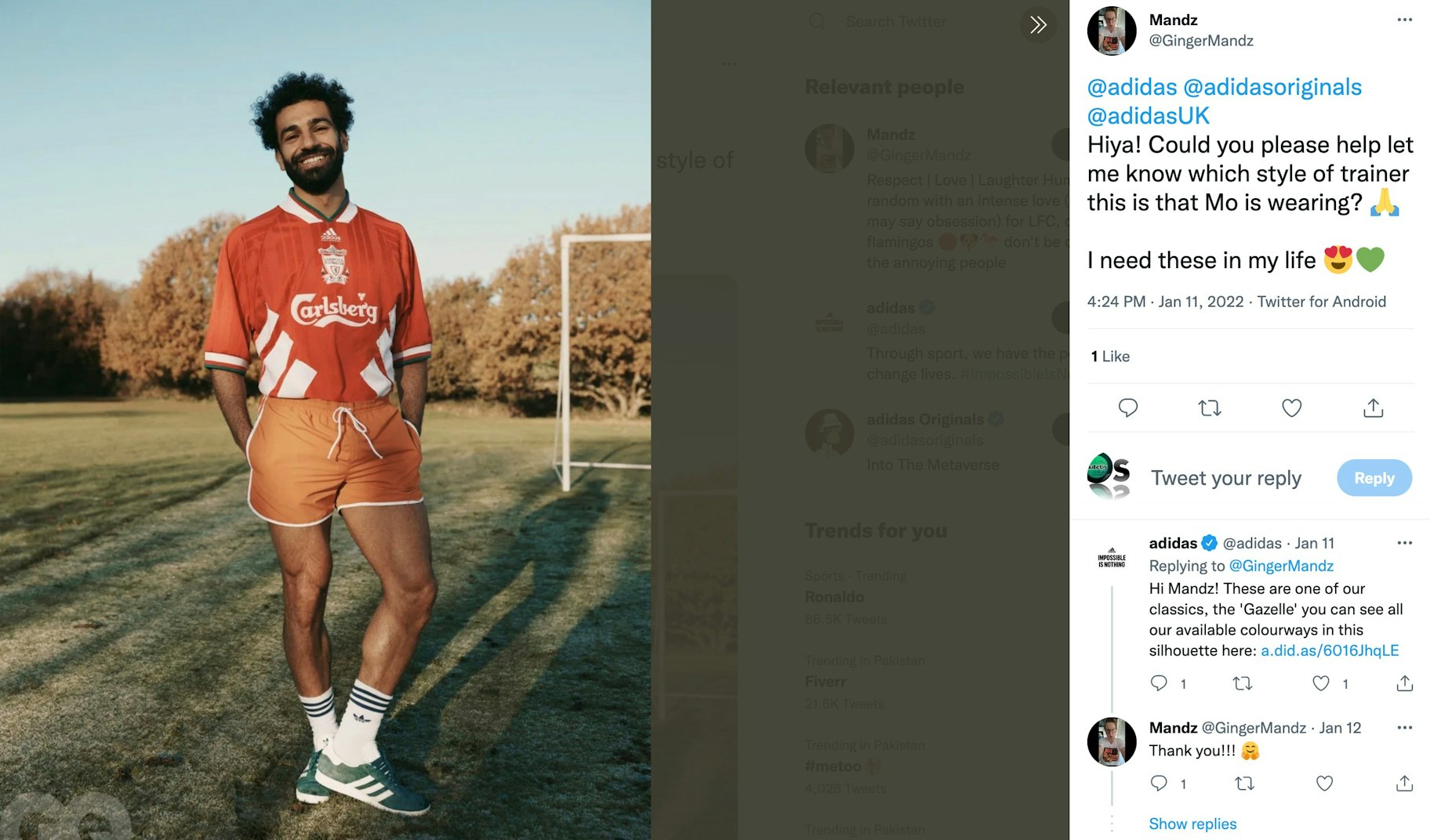
What’s more, social media marketing is closely linked to content marketing (which we’ll cover next). This is because social media platforms are the perfect place to promote valuable content to your community and niche.
OK, but what about ads on social media?
Paid social media marketing
There are tons of ways to use paid social media marketing to promote your business, and each platform has its own suite of paid promotional options.
Take Facebook.
You can pay to promote your existing organic posts or create a dedicated Facebook ad tailored to your marketing objectives.
Most paid social media marketing is also referred to as “pay-per-click” (which we’ll cover in more detail below).
To learn more, check out How to Create a Killer Social Media Marketing Plan.
2. Search engine optimization (SEO)
Search engine optimization—also known as SEO—is the process of optimizing websites and digital content to improve search engine rankings, which, in turn, maximizes the number of visitors to a particular webpage.
In other words, say you wanted your office furniture website to appear at the top of Google’s search results whenever someone searches for “office furniture in London.” Well, the process you would use to make that happen is SEO.
It’s worth noting that today when we talk about SEO we’re almost exclusively referring to Google (unless you live in China and use the search engine Baidu).
Why?
Because Google is undoubtedly the most popular search engine in the world—eating up a huge 79.77% of market share.

So how does SEO work?
Search engines use something called “crawler bots” to crawl the web and build an index of the content available online.
Then, whenever someone searches a keyword, the search engine will try to provide the most useful and relevant results.
There are two sides to SEO: on-page and off-page.
What is on-page SEO?
On-page SEO is when you optimize your website or content to rank higher in search engines for targeted keywords or phrases.
Examples of on-page SEO include:
- Increasing your website speed
- Having a responsive mobile-optimized web design
- Including your targeted keywords
- Structuring content with title tags
- Optimizing for Google’s featured snippets
- Using structured data markup
- Including internal links to other pages on your website
- Adding outbound links to other relevant websites
For this reason, SEO is closely related to content marketing—we’ll explore this more below.
What is off-page SEO?
Off-page SEO is when you optimize your website or content to appear higher in the search results through methods outside of your website or content.
These include external signals like your social media presence and brand mentions.
However, the largest and most influential part of off-page SEO is the generation of backlinks. This is when other websites link to your website or content.
The reasoning behind backlinks is simple.
If lots of websites link to your website, then Google will assume you have valuable and relevant content.
Search engines also take into account the authority of the website that links to you. For example, one link from an authoritative website like The New York Times will be more effective than 100 links from unknown websites.
A great way to generate backlinks from authoritative websites is to produce high-quality content that other people will want to share.
Alternatively, you can create dedicated content for another website—this is called “guest posting.”
3. Content marketing
Content marketing is the process of consistently creating, distributing, and promoting relevant online materials in a way that’s strategically designed to attract, engage, and convert your target market into customers.
There are countless forms of content that businesses use to do this, such as:
- Blog posts
- Videos (that are often shared to social media platforms like Facebook and YouTube)
- Industry reports and studies
- Infographics summarizing reports and studies
- Ebooks
- Podcasts
- Case studies
- Emails
- Webinars
This article that you’re reading is content marketing!
Content marketing works closely with many other types of internet marketing—especially social media marketing and SEO.
As we saw above, social media is one of the main channels used to distribute and promote content.
Now, let’s take a closer look at how content marketing relates to SEO.
Search engine optimized content is one of the best ways to increase brand awareness and appear higher in the search engine results pages (SERPs).
For example, I wrote a blog post titled Instagram Story Dimensions and Killer Ideas to Up Your Game, and I used SEO best practices to optimize it for the keyword “Instagram story dimensions.”
And currently, whenever someone searches that keyword on Google, my article is the top result:
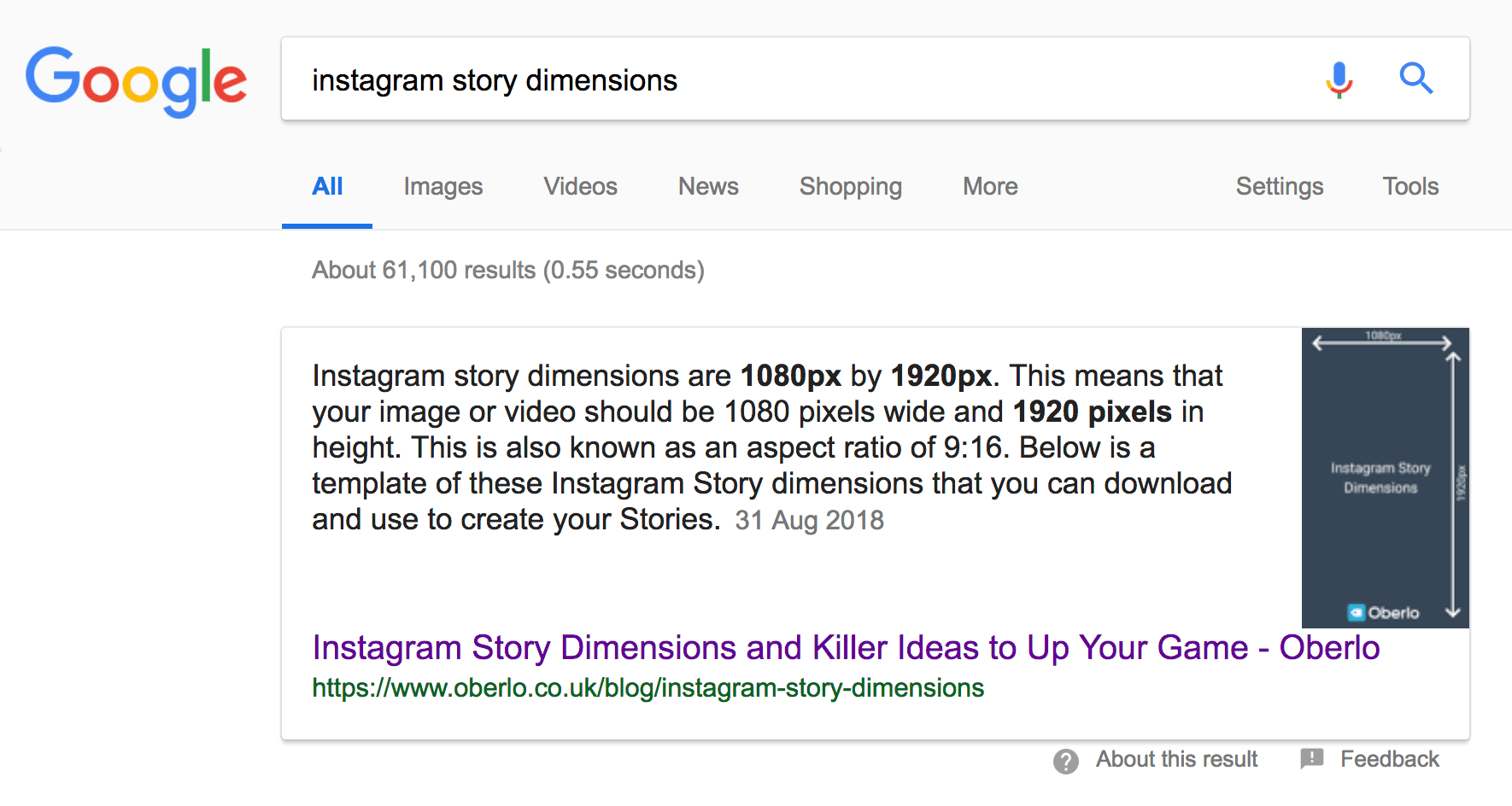
Here’s the aim of the game:
Ideally, most people who search “Instagram story dimensions” will click on my article and derive plenty of value from it. Then, they may explore some of the other great content that our website has to offer.
Hopefully, a large proportion of those visitors will sign up to our email list to hear about great new content.
It’s win-win.
Our readers get awesome free content to help them start and grow a business, and we get to be the platform that helps them do it.
The key to content marketing is all about giving before you get.
To learn more, check out How to Use Content Marketing to Attract Customers.
4. Influencer marketing
First things first: What exactly is an influencer?
An influencer is someone with a relatively large online following, including:
- Mainstream celebrities like Emma Watson
- Niche celebrities such as world chess champion Magnus Carlsen
- Industry experts and authorities, such as digital marketing expert Neil Patel
- Micro-influencers (those with less than 100,000 followers) like environmentalist Elizabeth Couse
So what’s influencer marketing?
Influencer marketing is the process of working with influencers to promote a product or service to their online following.
Let’s look at an example from Vital Proteins.
This food supplement brand partners with influencers to reach their target audience of young, fashionable, health-conscious women.
Here, influencer Meredith Foster promotes Vital Proteins on her Instagram account:

Before internet marketing, influencer marketing was only available to large brands who could afford to work with big-name celebrities.
But now, everyone can engage in influencer marketing.
In fact, InfluencerMarketingHub found that, on average, micro-influencers with 10,000 to 50,000 followers charge between $100 and $500 per Instagram post.
Remember, that’s on average—meaning some might charge just $50, and plenty of others will happily promote your product in exchange for a free sample.
Alternatively, many businesses will opt to pay the influencer a cut of the sales they produce—this is called affiliate marketing (which we’ll cover in the next section).
Want to know the best part?
Micro-influencers actually perform better than big-name celebrities. This is because most consumers are likely to buy a product recommended by someone they can relate with.
To learn more, check out How to Do Influencer Marketing.
5. Affiliate marketing
Affiliate marketing is essentially just online referral marketing.
A business will set up a program that pays commissions to external websites or individuals for the traffic or sales they generate.
This allows internet marketers and influencers to earn money promoting another business’s products or services.
Let’s look at an example.
Website host and domain registrar Bluehost has a popular affiliate marketing program that allows influencers and internet marketers to make money by promoting their services.
The popular blog The Minimalists promotes its Bluehost affiliate link in its articles.

Each time one of its readers clicks the link and signs up, Bluehost gives The Minimalists a cut of the action.
Cool, right?
Understandably, affiliate marketing is deeply intertwined with social media marketing, content marketing, and influencer marketing. This is because most affiliate links are promoted in content or on social media by influencers.
To get started with affiliate marketing, check out Affiliate Programs: 8 Best Options For Beginners.
6. Email marketing
Email marketing is the process of using email to send direct marketing messages to people in an effort to gain new customers and retain existing ones.
Although email marketing might not seem like the most glamorous form of internet marketing, don’t underestimate its raw power.
Why?
Email marketing has a median return on investment of 122%—over four times higher than other types of internet marketing like social media and paid search.
So how does email marketing work?
Well, before you can begin email marketing, you’ve got to get your hands on some email addresses!
For this reason, email marketing nearly always works in partnership with other types of internet marketing, like social media marketing and content marketing. In fact, just look to the right-hand side of this page and you’ll see a box inviting you to subscribe to our newsletter.
Email marketing campaigns will often start with something called a lead magnet—which is just a fancy way of saying “bait.”
The bait is usually a discount coupon or a particularly desirable piece of content, such as an ebook.
Shwood offers visitors a 10% discount off their first purchase if they sign up:

Now, this is when the fun starts.
After capturing email addresses, you can begin nurturing your email subscribers with useful content, giveaways, discounts, early access to new products, and more.
You can also boost sales using email segmentation.
This is when you create separate groups of subscribers (called “segments”) based on their personal preferences and what stage each subscriber is at in the buyer’s journey.
Then, you can create automated email campaigns for each segment that:
- Welcome new subscribers
- Follow up abandoned carts
- Follow up with new customers to land repeat sales
- Ask happy customers for a review
- Re-engage inactive subscribers
- Gather valuable feedback from existing customers
To learn more, check out 6 Vital Email Templates Every Online Business Should Steal.
7. Paid advertising
Paid advertising is a type of internet marketing strategy where advertisers pay to show their adverts on search engines and other online platforms, such as Facebook, YouTube, LinkedIn, and Instagram.
Paid advertising is often referred to as pay-per-click or PPC—this means that advertisers will pay a fee each time a user clicks on one of their ads.
But there’s more to paid advertising than PPC.
Many platforms now charge advertisers in different ways depending on their marketing objectives, such as:
- Cost per thousand impressions (also known as cost-per-mille or CPM). This means you’ll be charged each time your ad is viewed 1,000 times.
- Cost per view (CPV). This means you’ll be charged for each view your video receives.
- Cost per action (CPA) (also known as cost per acquisition). This means you’ll be charged each time a user takes a specific action or converts into a customer.
The two biggest digital advertising platforms are Google and Facebook. Between them, they receive the majority of US digital ad spend, with 38% and 19%, respectively.
Let’s take a quick look at each of them.
Paid advertising on Google
To advertise on Google, you must bid on the keyword terms you want to display your ads for.
For example, when using Google Ads, you can bid to have your ad display for the keyword “standing desk.”
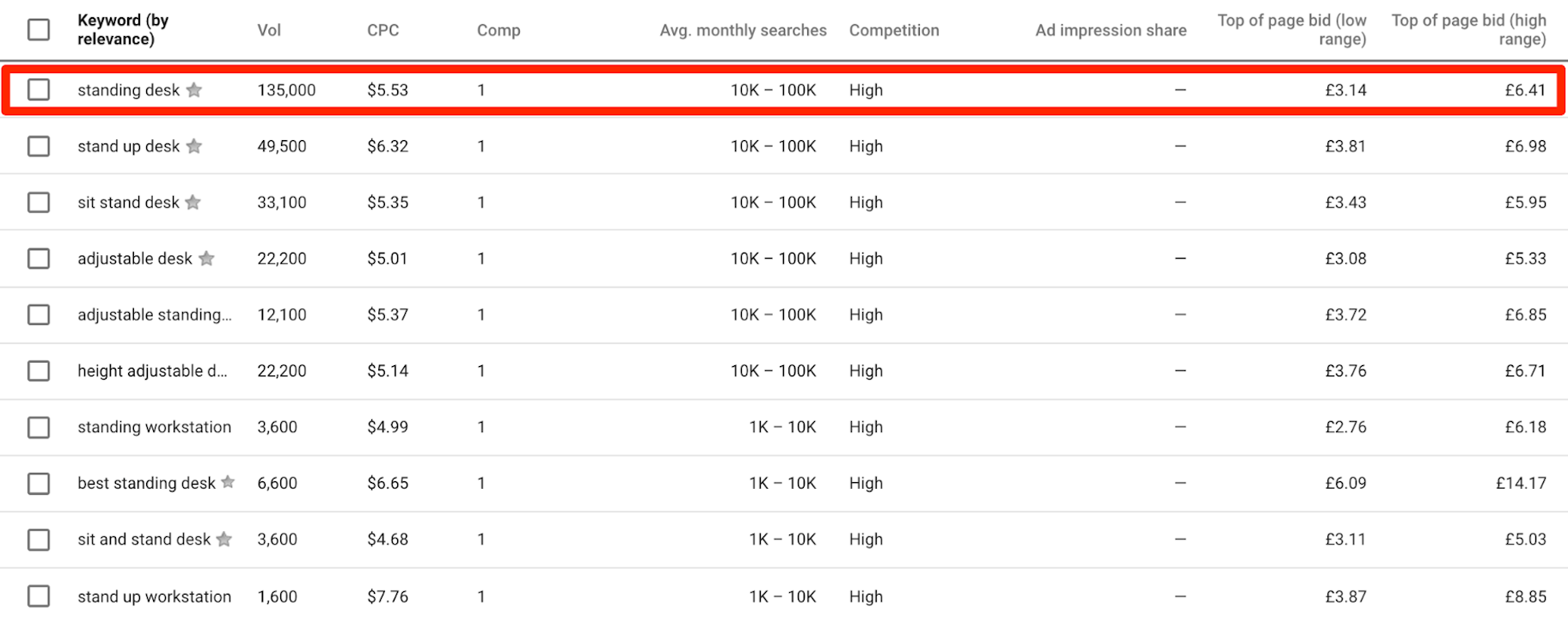
Then, if you win the bid, whenever someone searches “standing desk” on Google they’ll see your advertisement in the search results.
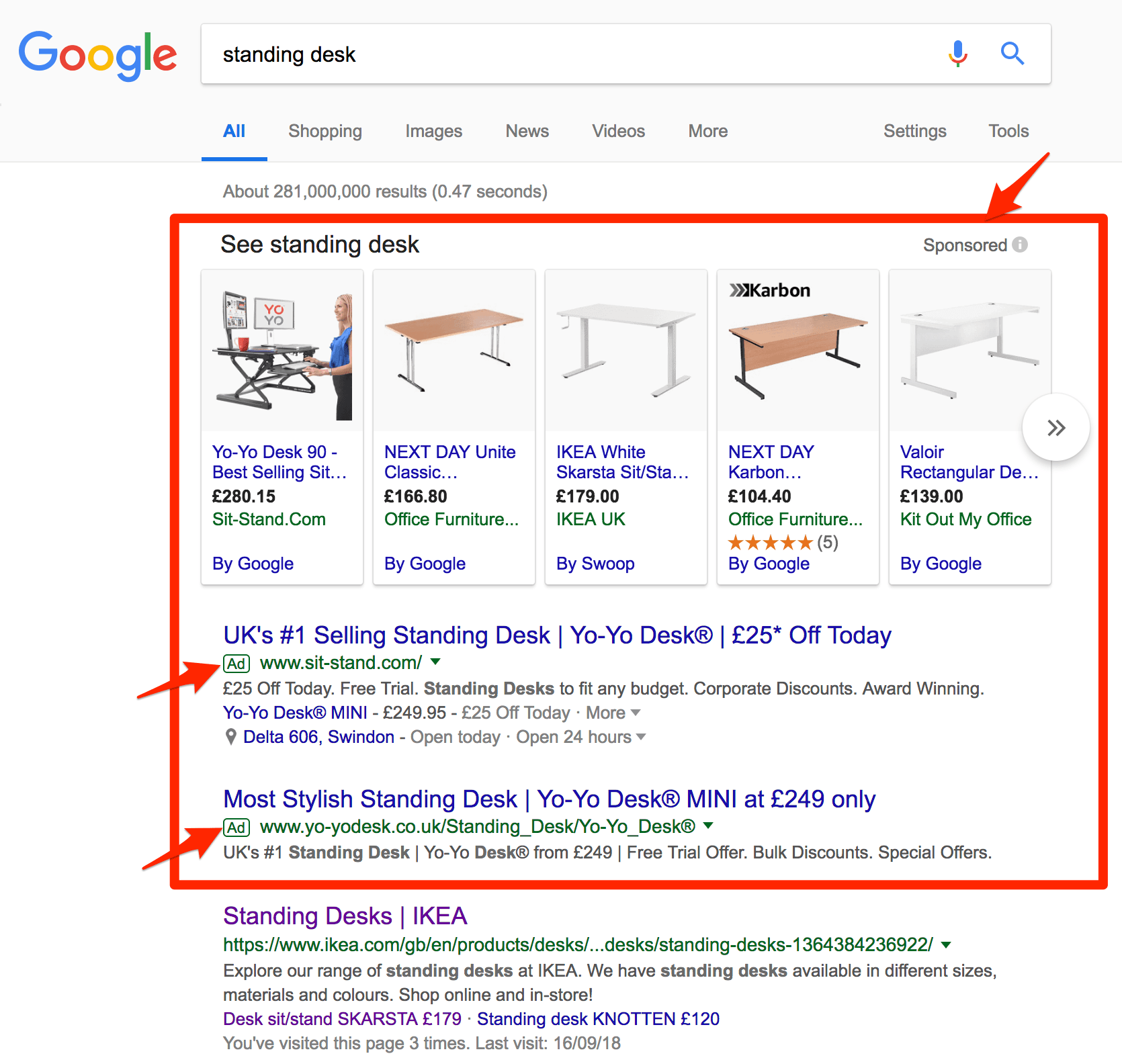
Paid advertising on search engines like Google is often referred to as search engine marketing, or SEM.
One of the key benefits to SEM is that searchers usually have a high level of buyer intent. Think about it: if someone searches “standing desk,” it’s highly likely they're interested in buying one!
Paid advertising on Facebook
Facebook allows you to display your ads to a refined target audience.
You can define your target audience by demographics, interests, behaviors, and more. Plus, there are numerous ways to apply different filters.
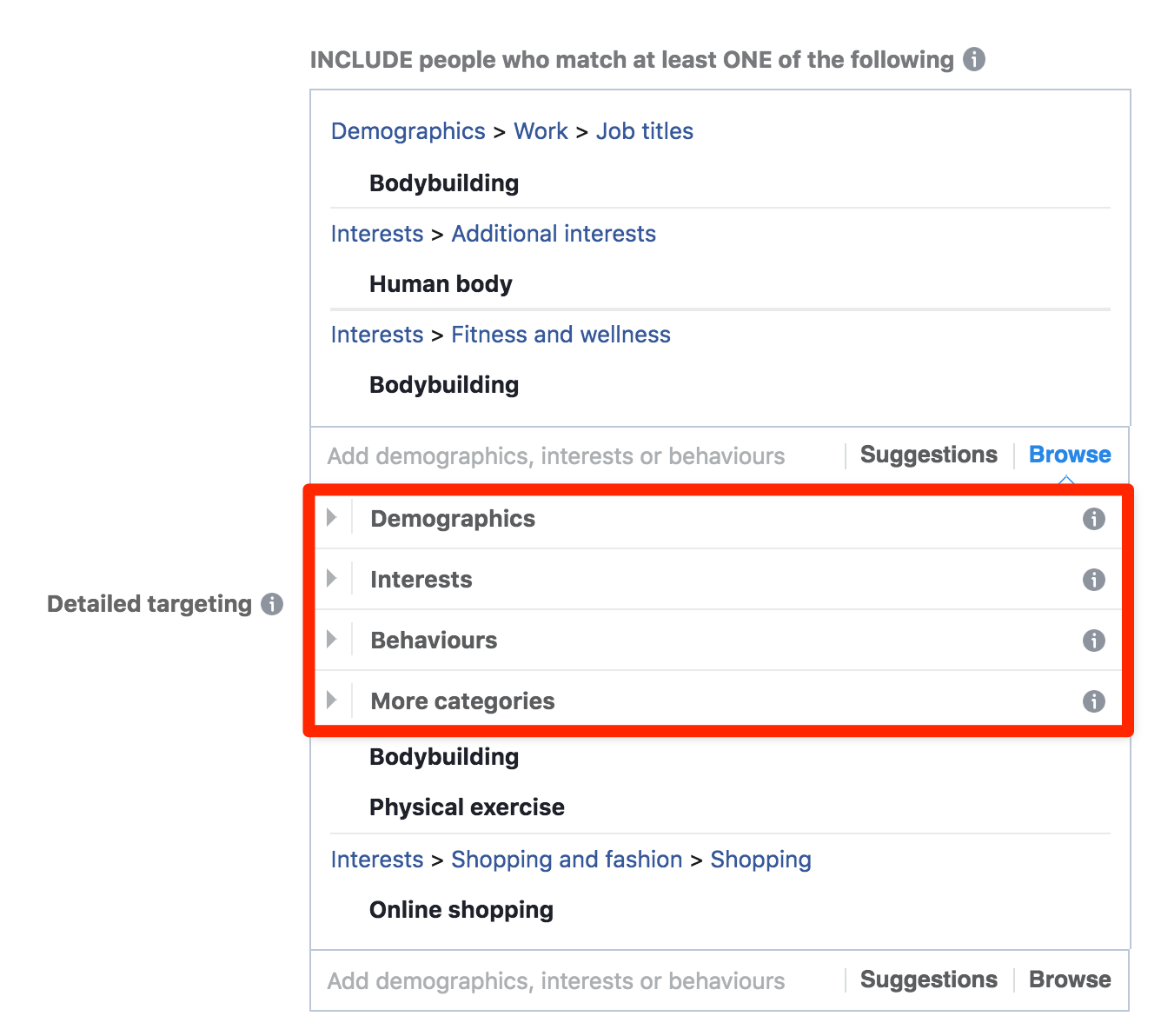
You can drill down to define your perfect customers and then use Facebook ads to reach them.
There’s also something called re-targeting (also known as remarketing).
Have you ever been followed around the web by adverts? If you’re like most people, you check out a new pair of shoes, and then everywhere you go online you see adverts promoting those shoes.
This is retargeting in action:
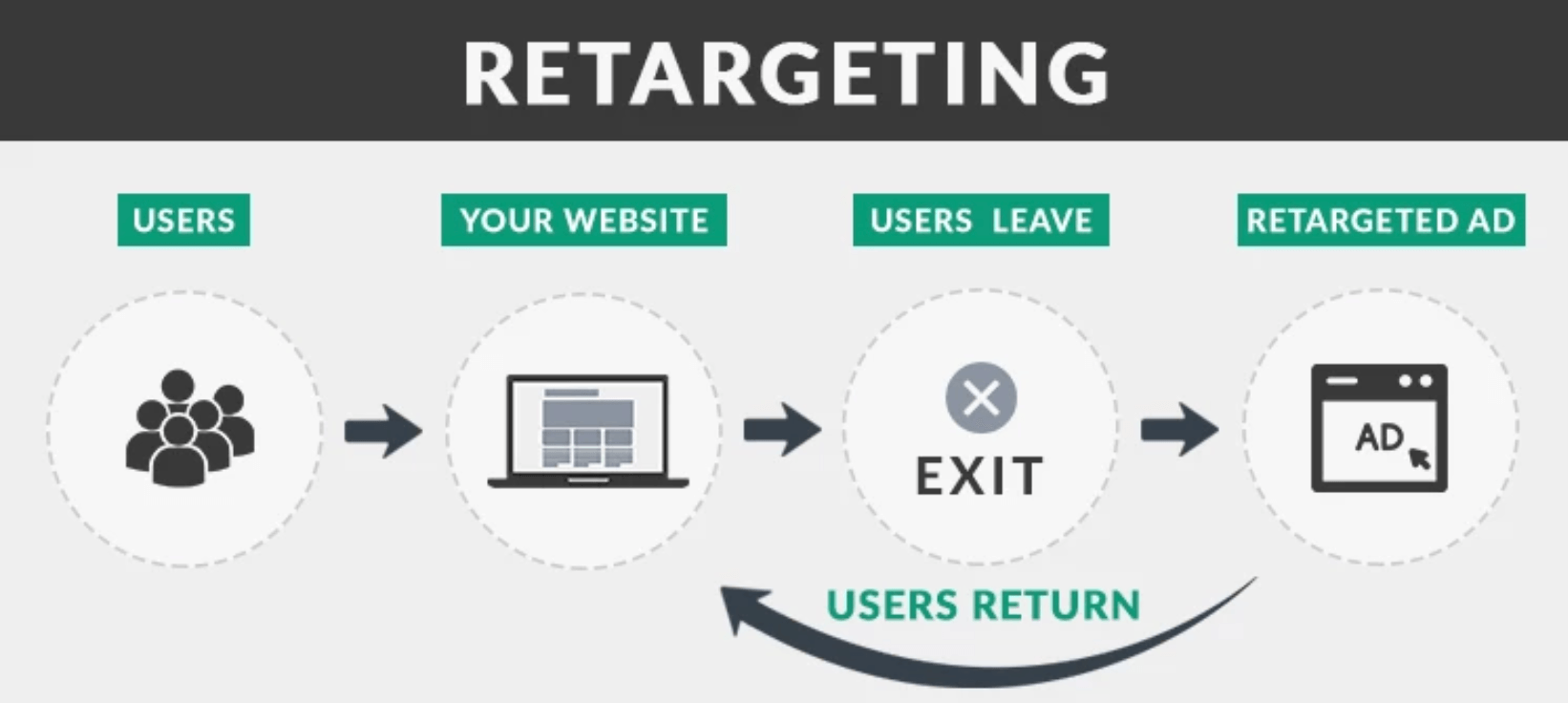
Online advertising options also have extremely advanced tracking features. After placing an ad, you can track every view, like, comment, click, and conversion it receives.
To learn more, check out The Beginner’s Guide to Boosting Sales With Google Shopping Ads.
Internet marketing summary
More and more people are spending larger chunks of their day online, and all you need to reach them is an internet connection and a smartphone or laptop.
Because unlike most traditional advertising, many forms of internet marketing—such as social media marketing, content marketing, or SEO—can be done for free.
It doesn’t even need to cost anything to learn internet marketing, with countless resources available online for free.
Remember, there are seven types of internet marketing:
- Social media marketing
- Search engine optimization (SEO)
- Content marketing
- Influencer marketing
- Affiliate marketing
- Email marketing
- Paid advertising (PPC, SEM, etc.)
Plus, each type of internet marketing usually works best when used alongside others.
Which type of internet marketing do you want to start using? Why? Let us know in the comments below!






